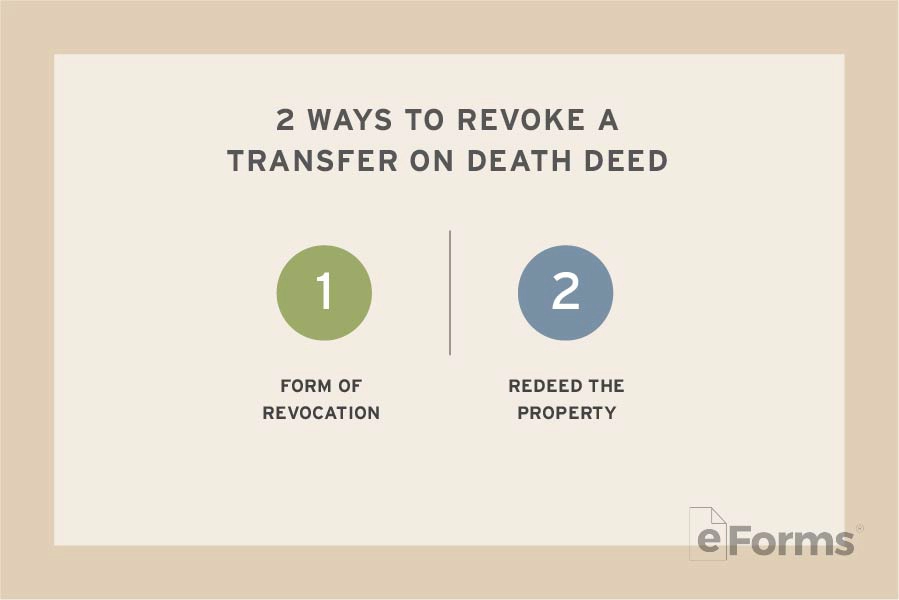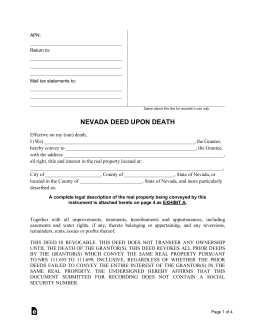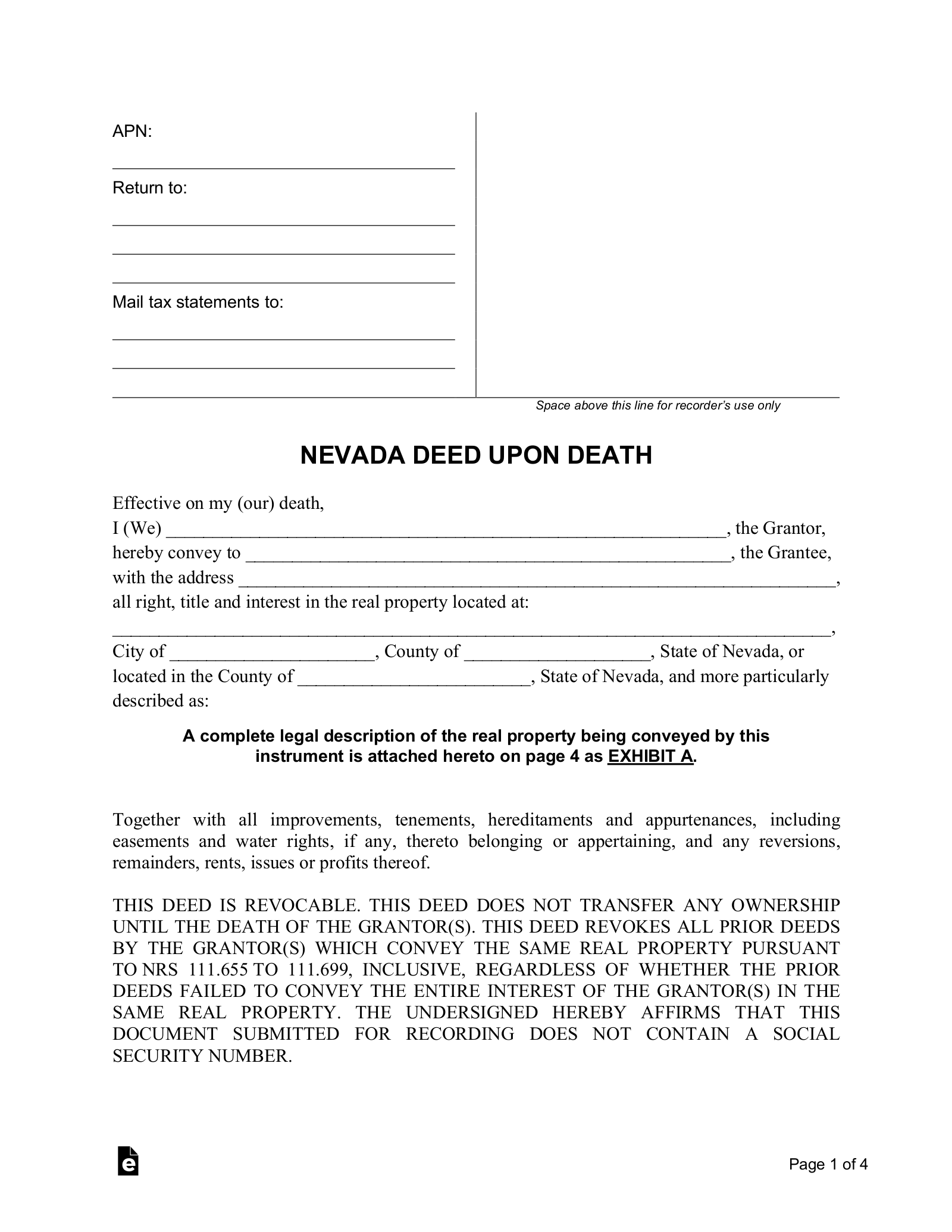Updated March 21, 2024
A Nevada deed upon death allows a property owner to transfer ownership to a designated beneficiary upon their death. This keeps the property transfer out of probate, which can be costly and time-consuming. However, to be effective, the deed must be executed, acknowledged, and recorded before the transferor’s death.
Table of Contents |
Requirements
- Notary: Required (NRS 111.105)
- Recording: Must be recorded in the office of the county recorder where the property is located before the transferor’s death (NRS 111.681)
- Witnesses: Not required
Legal Description
To complete a Nevada deed upon death, the transferor needs a legal description of the respective property. This description is used during title transfers and offers information regarding the parcel’s specific location and boundaries.
To find a legal description, reference property tax statements or the current deed. The county recorder can also find this information.
Example
“A parcel of land located in Churchill County, Nevada, having the
following description: commencing at the intersection of the north line of
Native Country Drive and the middle of Ramble Creek, thence northeasterly along the center thread of Ramble Creek 120 feet…”
Revocation

To revoke a deed upon death in Nevada, a property owner may choose to complete a form of revocation (NRS 111.697). This form must be executed and recorded by law before the property owner’s death to be considered valid.
Alternatively, the property owner may choose to re-deed the property to someone else. This can be accomplished by completing a new deed upon death or by selling the property.
Where to Record
A deed upon death must be recorded in the office of the county recorder where the property is located before the property owner’s death to be considered valid (NRS 111.105).


